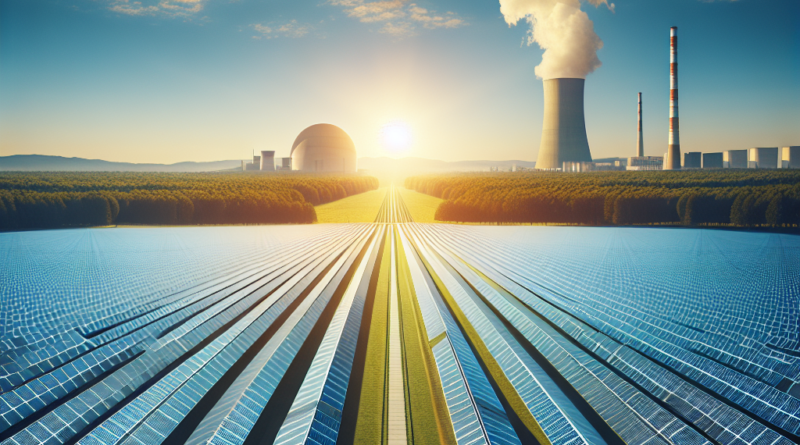How Many Solar Panels Are Needed to Match the Energy Output of a Nuclear Power Plant?
“`html
How Many Solar Panels to Replace a Nuclear Power Plant?
Understanding how many solar panels are required to replace a nuclear power plant is critical, especially amid the ongoing energy transition.
The global energy discourse increasingly focuses on sustainable solutions to meet rising demands without further polluting the environment.
The climate emergency compels us to confront vital questions, and we can no longer delay our responses.
Among the main energy sources considered for transitioning away from fossil fuels, nuclear and solar power are often compared.
While both present significant advantages and challenges, it is essential to determine how many photovoltaic panels would be needed to generate the equivalent energy of a nuclear facility and examine the pros and cons associated with nuclear energy.
Solar Panels Needed to Match a Nuclear Power Plant
Comparing solar and nuclear energy reveals notable differences in energy production and land use.
A nuclear power plant possesses a higher energy density than a solar installation, requiring considerably less space to generate the same electricity output.
To equal the output of a single nuclear power plant, approximately 3,125 solar panels, each rated at 320 watts, would be needed.
This substantial number occupies a significant area of land.
Nuclear energy offers continuous and reliable electricity production, operating without interruptions and regardless of weather conditions.
In contrast, solar energy is contingent on sunlight and weather variations, necessitating effective energy storage solutions to ensure a stable supply.
Pros and Cons of Nuclear Energy
Nuclear energy is surrounded by a complex array of advantages and disadvantages that continue to spark debate among environmentalists.
Pros
A key advantage of nuclear energy is the absence of CO2 emissions during electricity generation, thus helping to mitigate climate change.
Furthermore, just one kilogram of uranium can generate energy equivalent to that produced by 60 tons of natural gas, 80 tons of oil, or 120 tons of coal, showcasing its high energy density.
Nuclear plants can operate continuously, providing a reliable energy supply while decreasing dependence on environmental variables compared to renewable sources.
Moreover, uranium is sourced from politically stable countries, minimizing supply security concerns.
Cons
However, nuclear energy presents significant downsides.
Uranium is a non-renewable resource, and while current reserves may appear plentiful, they could eventually dwindle, leading to rising costs and environmental challenges related to extraction.
The safe management of radioactive waste is another major concern; these materials need to be securely stored for thousands of years, which involves significant expenses and environmental risks.
Additionally, despite advances in safety technologies, nuclear accidents—though infrequent—can have catastrophic and enduring environmental impacts, as demonstrated by historical disasters like Chernobyl and Fukushima.
In conclusion, while the comparison between solar and nuclear energy is complex and nuanced, preferring one over the other highlights distinct approaches, each with unique strengths and weaknesses.
Solar panels, while an ecological and sustainable choice, demand ample space and are weather-dependent.
Conversely, nuclear energy ensures consistent and efficient power generation in a comparatively smaller footprint, yet poses substantial challenges with waste management and potential risks.
Ultimately, embracing energy sources that do not contribute to climate change is paramount, regardless of the path chosen.
“`




